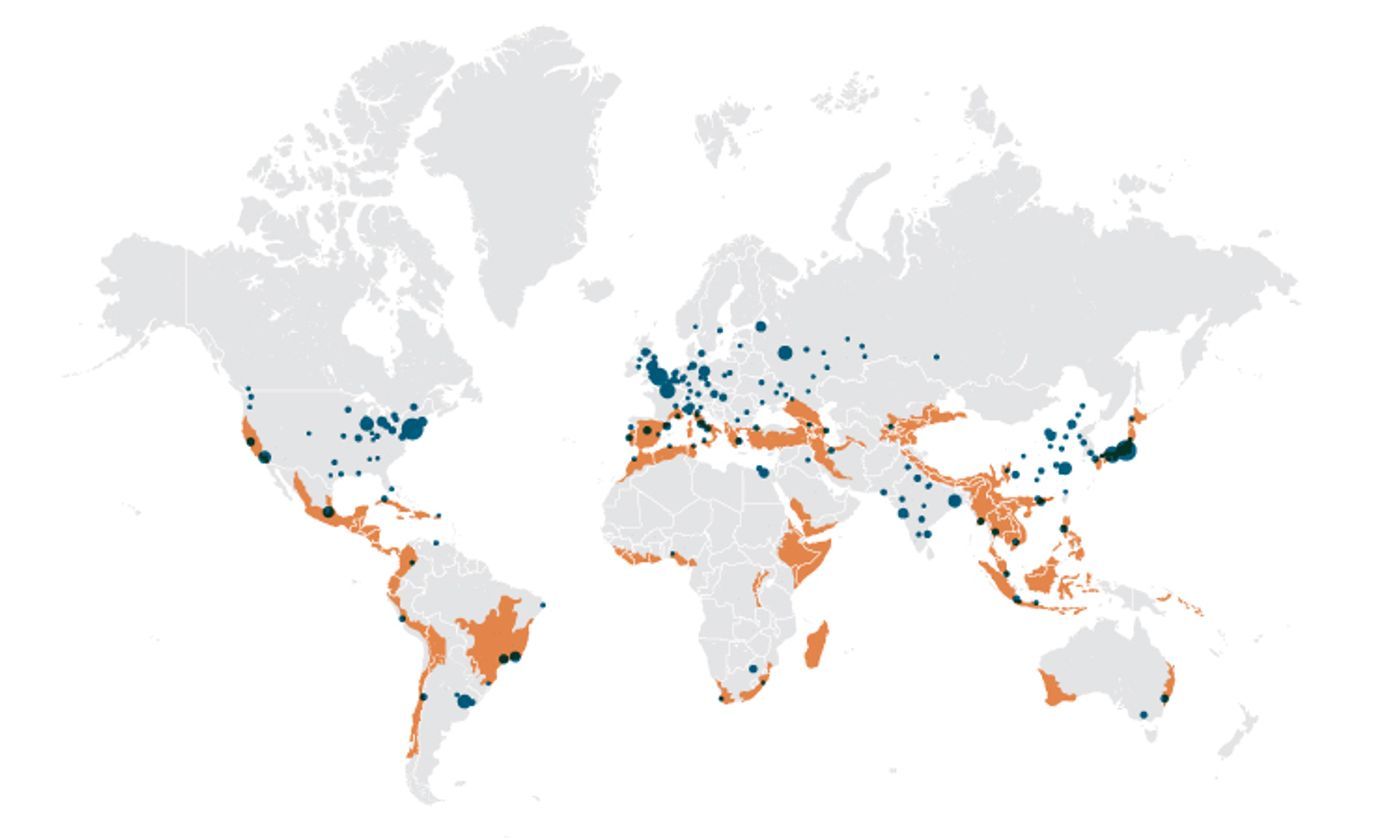In the modern age, Earth has become an urban planet. That has dramatic and far-reaching implications for all of Earth’s inhabitants, especially because the planet only continues to urbanize. While about half of the world’s population is currently residing in a city, it is projected that by 2050 about two of every three people will live in an urban area.
In decades past, most of the people that lived in cities were in Europe or North America. That is shifting, however. Three countries - India, China and Nigeria - are poised to add 1 billion city dwellers in the coming years and by 2030, the majority of the world’s urbanites will reside in Asia or Africa.
Cities use a tremendous amount of material to construct, and the concrete within them can trap a lot of heat. This creates heat islands that are hotter during both the day and nighttime. Pavement used in cities prevents water from being absorbed back into the land. This can not only lead to flash flooding but also adds to pollution when it runs off. While it’s almost an obvious observation, a
study has shown that in nine cities surveyed, as the city grew there was an increase in the amount of ground cover that was paved over and impervious. This increase correlated with a loss of diversity in aquatic ecosystems. Cities also use a lot of artificial light, and are so lit up at night that it never really gets dark, which is known to disrupt circadian rhythms and have detrimental health effects. A city’s ecological footprint is often 200 (or more) times the size of the city itself.
People also love the same environments as wild animals, like those with lush vegetation. As such, the world’s expanding construction is beginning to encroach on wild lands. There is ever increasing competition for the best areas to live, and that is affecting and threatening biodiversity hotspots more than ever.
Science magazine has created some
interactive infographics to analyze many of these changes in more depth.
There are some silver linings here though. If a city is planned well, there can be tremendous improvement in efficiency, leading to less energy use per person compared to people living in rural areas. People who are becoming more aware of the pitfalls of urbanization are trying to integrate solutions for them as well, such as by refining outdoor lighting to reduce so-called light pollution at night, or using thermal imaging to reveal what buildings are not insulated well so they can be retroactively upgraded. Science has also published a new
review article in which authors Daniel Kammen and Deborah Sunter of the University of California, Berkeley, focus on various options and challenges in future urban sustainability.
It’s clear that cities are a permanent part of the landscape and environment humans have created for themselves. Taking the effects of urban areas on the planet into consideration is crucial for maintaining healthy places where future generations can live.
Source:
Science,
USGS









